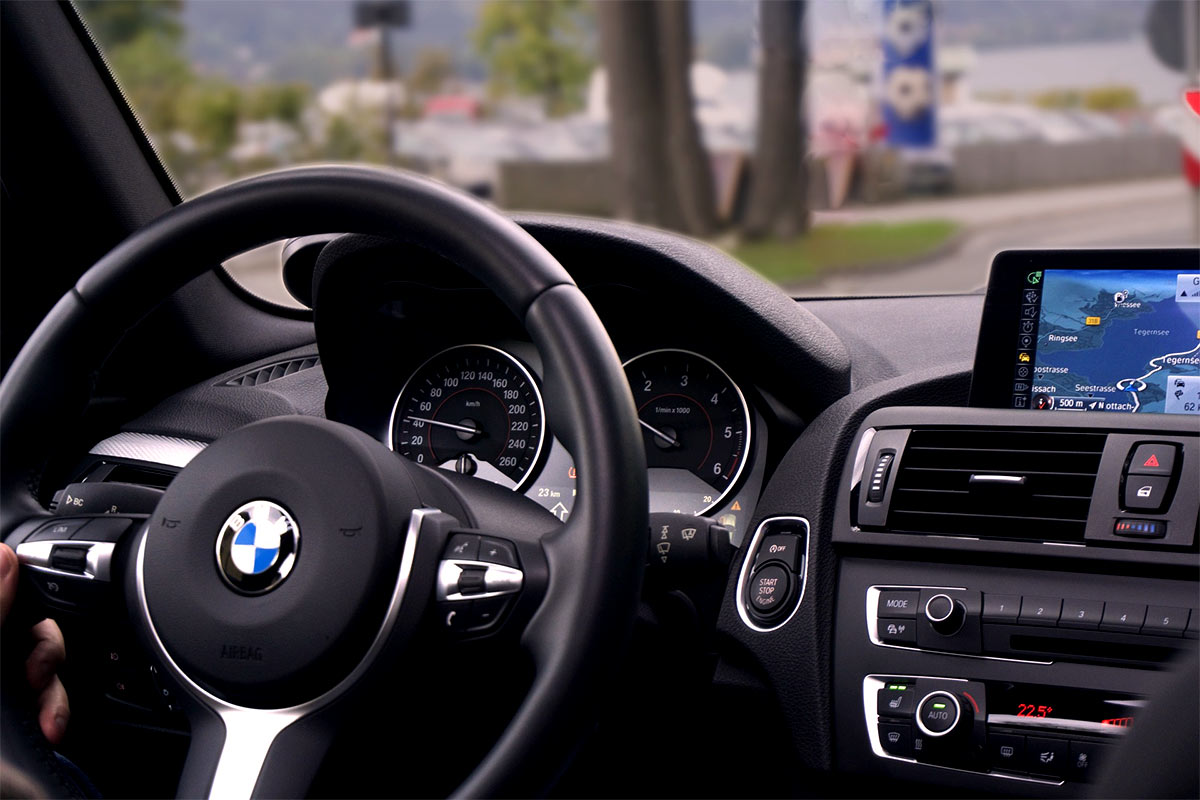Most modern cars come with an assortment of different technological additions that we tend to overlook; we are so used to advanced technology in our everyday lives that the ability to get us from A to B is no longer all we look for in our vehicles. Together with Grange, who stock a range of luxury vehicles including used Aston Martin cars, we investigate where three of the most popular motoring tech features originated…
The origin of Bluetooth
You’re probably used to using Bluetooth on your smartphone, whether that’s to play music or talk hands-free. However, the name Bluetooth was only officially adopted in 1998 and the first handset using the technology was only shipped in 2000 — it would be another year before Bluetooth hands-free car kits started to hit the market too.
The origins of Bluetooth stem from a while further back, however. It was back in 1993 that Jaap Haartsen was employed as a wireless communications engineer for the Swedish digital communications company Ericsson. While in this job, Haartsen received the task to create a short-range radio connection that could enable new functionalities for mobile phones.
Haartsen teamed up with Sven Mattison, a wireless communications engineer in the mid 90’s. The duo were soon successful at creating multi-communicator links. Haartsen wasn’t finished yet though, with his work becoming more focused on piconet networks — a single piconet being the linking of two Bluetooth-enabled devices in order to establish an ad-hoc, short-range wireless network. Haartsen left Ericsson and helped to set up the Bluetooth Special Interest Group in 1998. Over the next two years, he was the chairman of the SIG’s air protocol certifications group and played a part in standardizing the Bluetooth radio communications protocol.
That covers the origins of Bluetooth. However, you might still be wondering how it received its unique name. Well, MC Link just didn’t seem to have a ring to it. Therefore, Jim Kardach, the head of technological development at Intel, proposed the moniker that we all know the technology by today in reference to the Danish king, King Harald Blatand. Often referred to as Harald Bluetooth — possibly due to his penchant for snacking on blueberries — the monarch was responsible for uniting the warring factions in what is now known as Denmark, Norway and Sweden. The idea is that Bluetooth technology shares a similar trait in that it unites devices from competing manufacturers, such as a mouse made by Microsoft with a computer developed by Apple.
The origin of cruise control
The origins of cruise control might just shock you. One surprising fact is that the idea was first thought about during the 1940s, while the other is that it was invented by someone who couldn’t actually drive!
That’s not a misprint, either. Inventor and automotive hall of famer Ralph Teetor was the brains behind a system where the speed of a vehicle is automatically controlled with a flick of a switch or press of a button. However, he had been blind since the age of five after a shop accident. Teetor didn’t need his sight to notice that his lawyer had the tendency to speed up when listening and slow down when talking while driving though. Teetor found this inconsistency annoying, to the point that he started to look into whether a device could be developed which could control the speed of a car automatically.
This technology was originally patented back in 1948. However, it would take a few additional patents for improving the original gadget and close to a decade after the initial patent before cruise control technology was fitted to the 1958 models of the Chrysler Imperial, New Yorker and Windsor. Of course, from that point on the devices began to be used by so many manufacturers on their vehicles.
The origin of sat-nav
It’s hard to imagine driving anywhere these days without directions from your sat-nav system. However, it was only a couple of decades ago that motorists had to memorize directions before they got behind the wheel, or at least had a collection of fold-out maps in their glovebox to analyse whenever they took a break from driving.
The truly understand where sat-nav came from, we need to take a look at the US military system. This was because it was the US Department of Defense which developed the first satellite-based global positioning technology on behalf of the country’s military forces. Deemed TRANSIT, it was up and running as we entered the 1960s and involved the system using the DopplerEffect to calculate the position of the receiver in relation to satellites. As satellites could follow fixed trajectories at calculable speeds, scientists were able to use this data to pinpoint positions based upon short-term variations in frequency.
This satellite-based global positioning technology received more refined and precise editions during the early 1980s, which started to be used by the general military. Multiple satellites were utilised too. While GPS devices were also publicly available around this time — systems which use between 24 and 32 medium Earth orbit satellites that follow six trajectories for incredibly accurate results — they weren’t of much use. This is because the military added interference to the signals so that only their own version could be used with any precision.
Things changed in the years following this, however. President Clinton ended four years of deliberations to sign a bill in 2000 which ordered that the military ceased scrambling satellite signals that were being used by members of the public. The era of consumer-based sat-nav systems had begun.
Sources:
https://www.bluetooth.com/about-us/our-history
http://www.ipwatchdog.com/2015/05/10/evolution-of-technology-bluetooth-the-once-and-future-king/id=57473/
https://gizmodo.com/5899082/the-secret-history-of-bluetooth
http://www.todayifoundout.com/index.php/2014/11/blind-man-created-cruise-control/
https://blog.americansafetycouncil.com/history-of-cruise-control-2/
https://uk.pcmag.com/electronics/64623/the-history-of-car-gps-navigation
https://www.theupcoming.co.uk/2014/08/14/the-history-and-theory-of-satellite-navigation/


